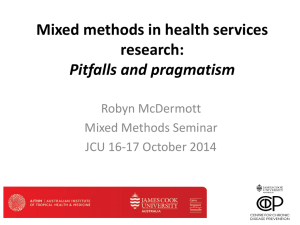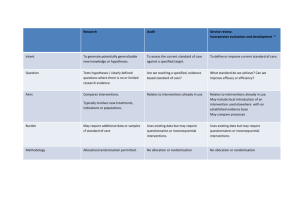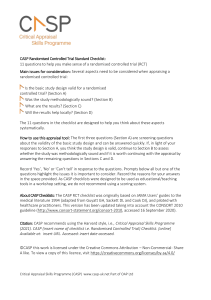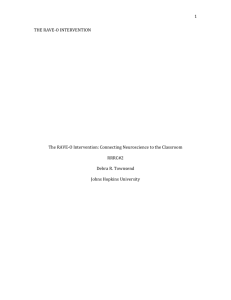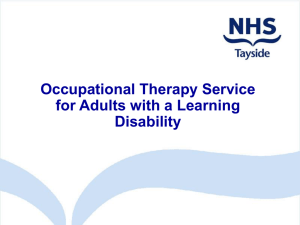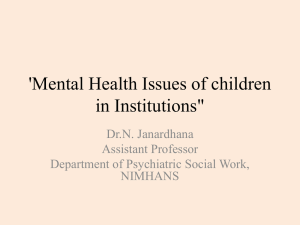A systematic review of interventions for children with cerebral palsy
advertisement
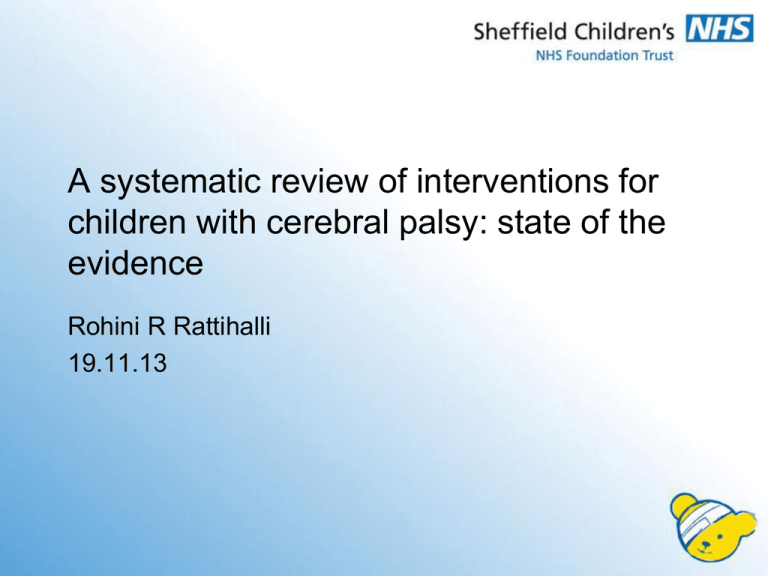
A systematic review of interventions for children with cerebral palsy: state of the evidence Rohini R Rattihalli 19.11.13 Why this paper • Relevant to practice • Good learning points re: practical aspects of EBM Oxford Centre for Evidence-Based Medicine 2011 Levels of Evidence Treatment benefits: 1. Systematic review of randomized trials or n-of-1 trials 2. Randomized trial or observational study with dramatic effect 3. Non-randomized controlled cohort/follow-up study 4. Case-series, case-control studies, or historically controlled studies 5. Mechanism-based reasoning Grading of Recommendations, Assessment, Development and Evaluations (GRADE) GRADE score: high (4), moderate (3), low (2), or very low quality (1 or less) Quality of evidence on – outcome of interest – in our population of interest. Initial score based on type of evidence +4 RCTs/ SR of RCTs, +/– other types of evidence +2 control) Observational evidence (e.g., cohort, case- Grading of Recommendations, Assessment, Development and Evaluations (GRADE) Quality: Based on Blinding and allocation process, Follow-up and withdrawals, Sparse data, Other methodological concerns (e.g., incomplete reporting, subjective outcomes) 0 No problems –1 Problem with 1 element –2 Problem with 2 elements –3 Problem with 3 or more elements Similar +/- regarding Consistency, Directness, Effect size ICF World Health Organization’s International Classification of Functioning, Disability and Health Classification of health and health-related domains • body functions and structure (BF), • activity (A) • Participation (P), • environmental factors (E), • Personal factors (P) Background: Interventions in CP • 40% no reported evidence- based • 20% ineffectual, unnecessary, or harmful. Methods Inclusion criteria • Level 1 preferred • Level 2 to 4 only if – No level 1 – New level 2 after most recent level 1 Full search strategy available on request Methods Results- Green Results-Amber Results: Red Neurodevelopmental therapy CASP 1. Did the review ask a clearly focused question? – Clear, but not focused (but this was intentional) 2. Did the authors look for the appropriate sort of papers? – Full description of search strategy not available in the paper, but assumed to be “yes”. CASP 3. Do you think important relevant studies were included? – Yes (assumed) 4. Did the review’s authors do enough to assess the quality of the included studies? – Yes (GRADE recommendations) 5. If the results of the review have been combined, was it reasonable to do so? – NA CASP 6. What are the overall result of the reviews? – Majority of the interventions in CP were “Amber”. This was mainly due to no sufficient evidence. 7. How precise are the results? – Precise within the constraints of information available to the authors. CASP 8. Can the results be applied to the local population? – Yes 9. Were all important outcomes considered? – Yes (and divided as per WHO International Classification of Functioning) 10. Are the benefits worth the harms and costs? – NA Bottom line • Green and Red interventions helpful, but majority of interventions are Amber: – Evidence of inadequate effect OR Lack of evidence • What is the realistic possibility of having Level 1, Strong High quality, strong recommendation evidence for all interventions? So what is the solution?

